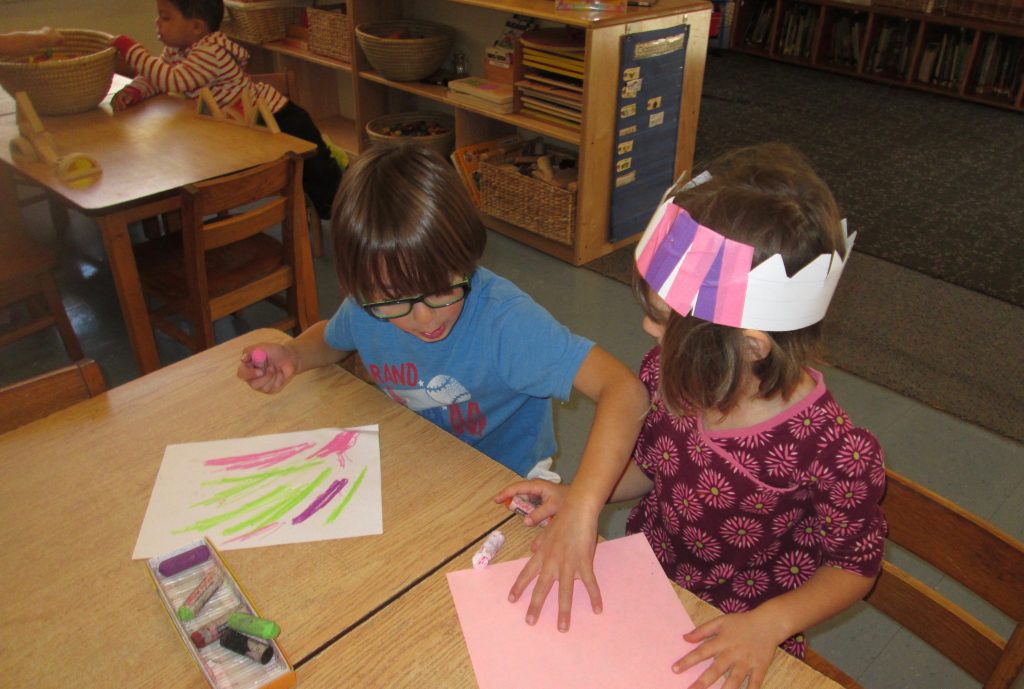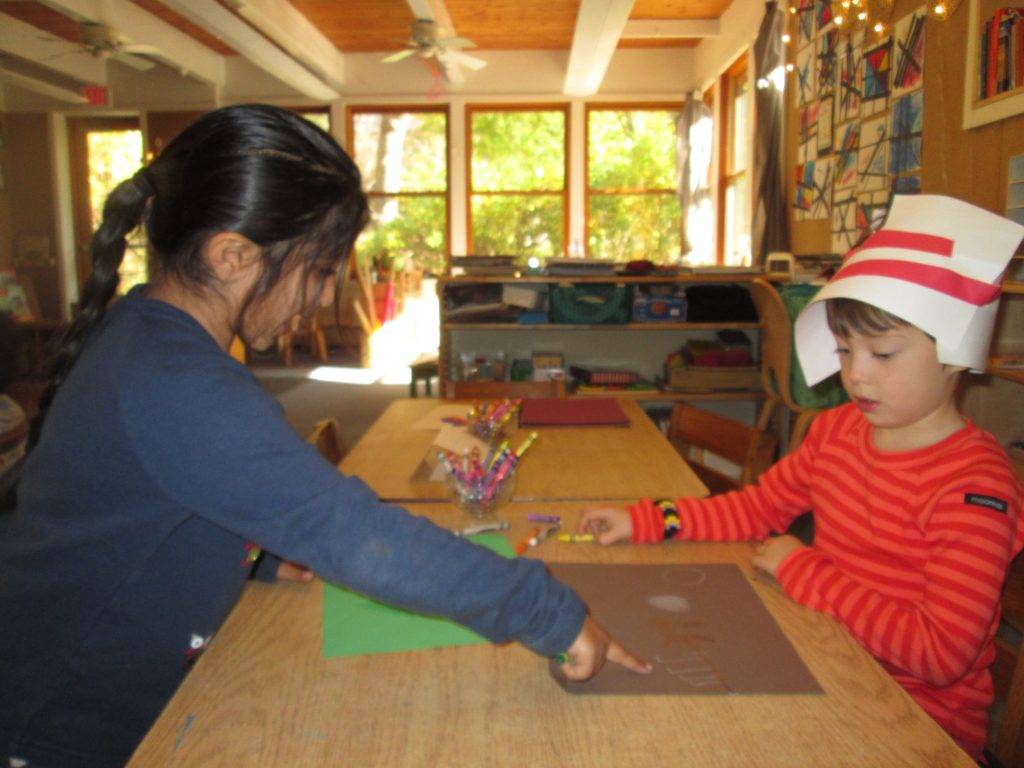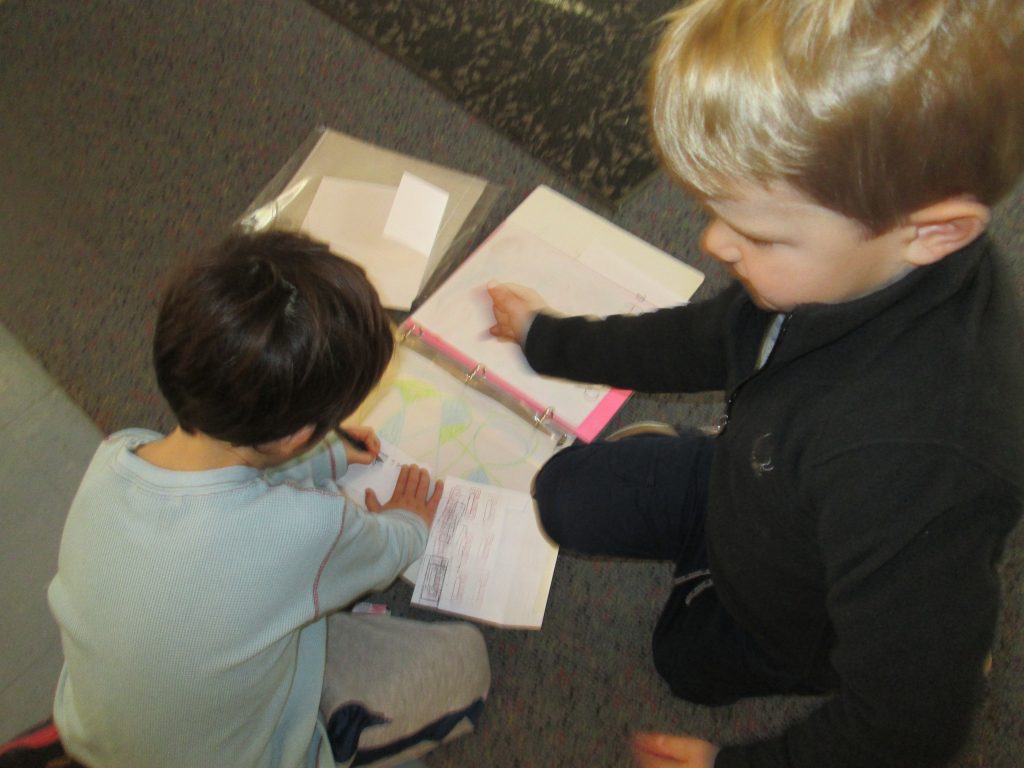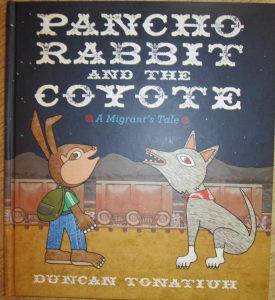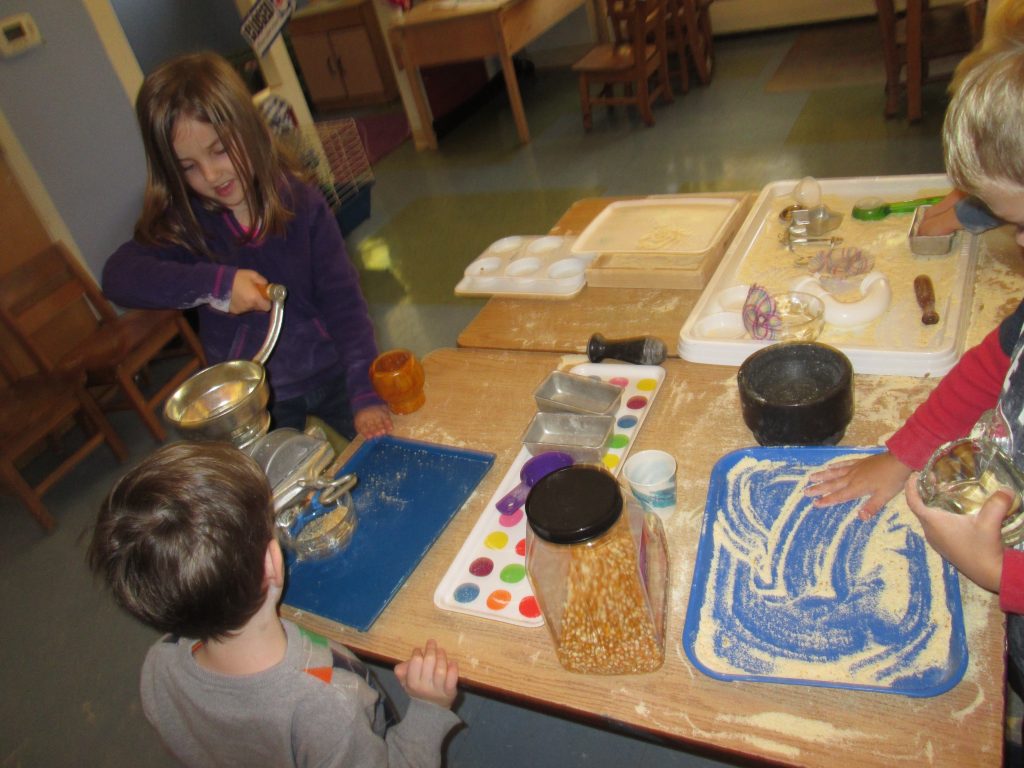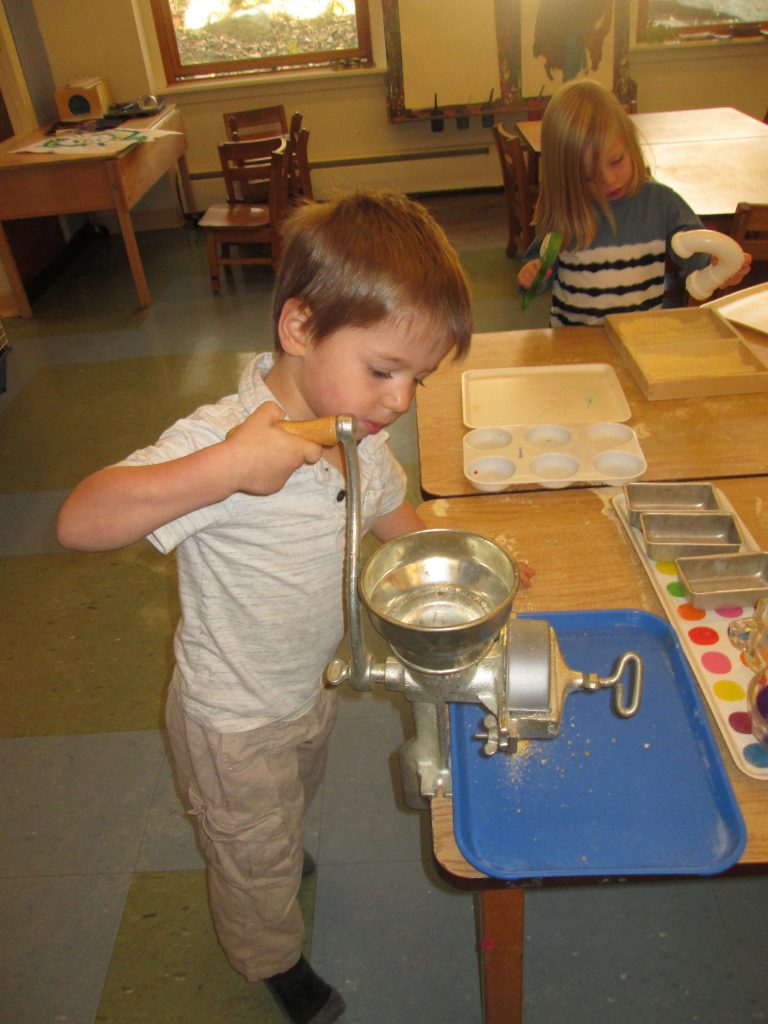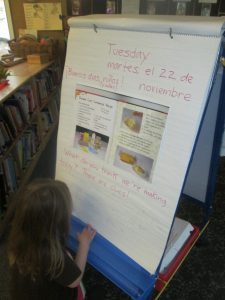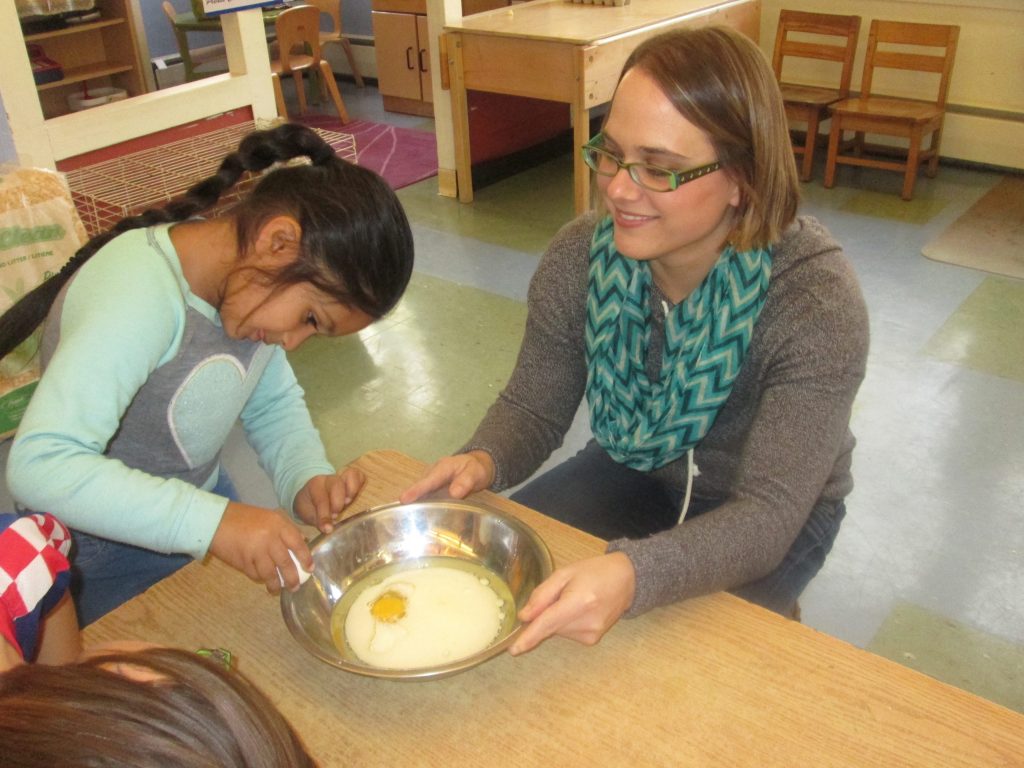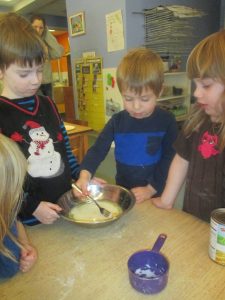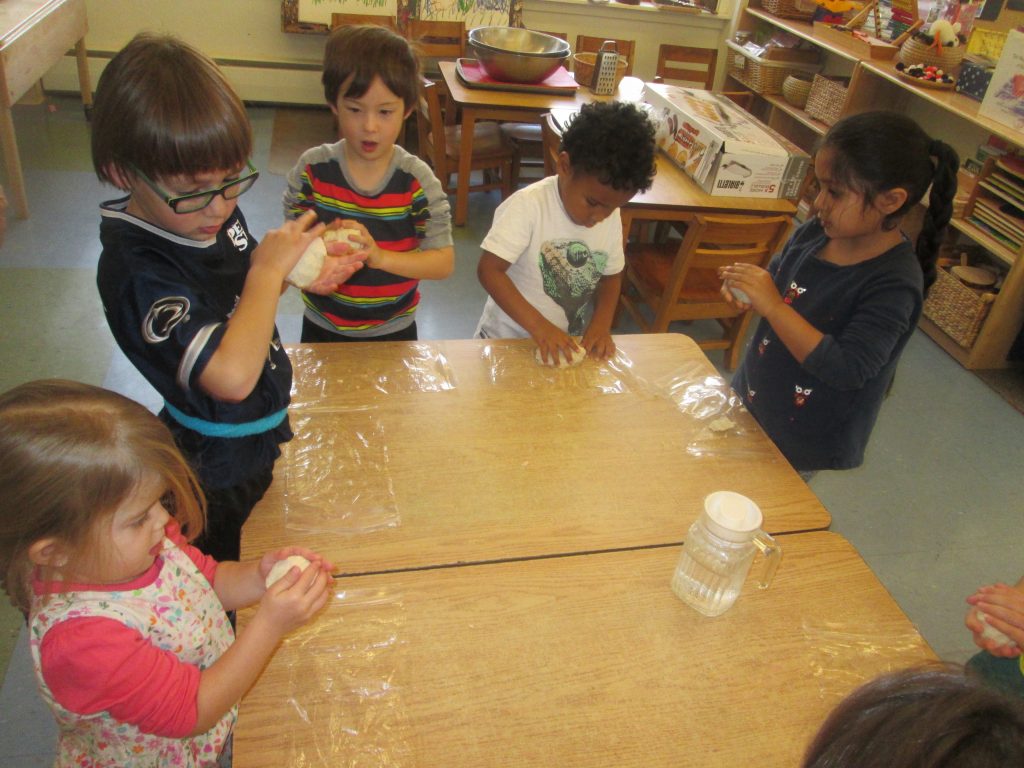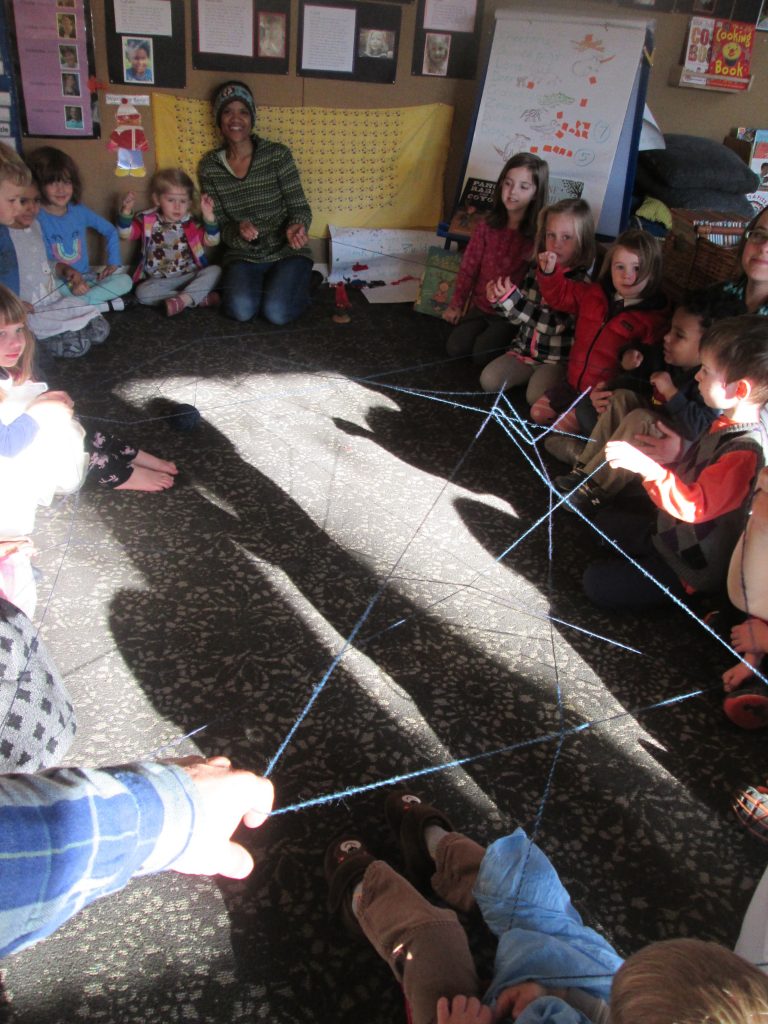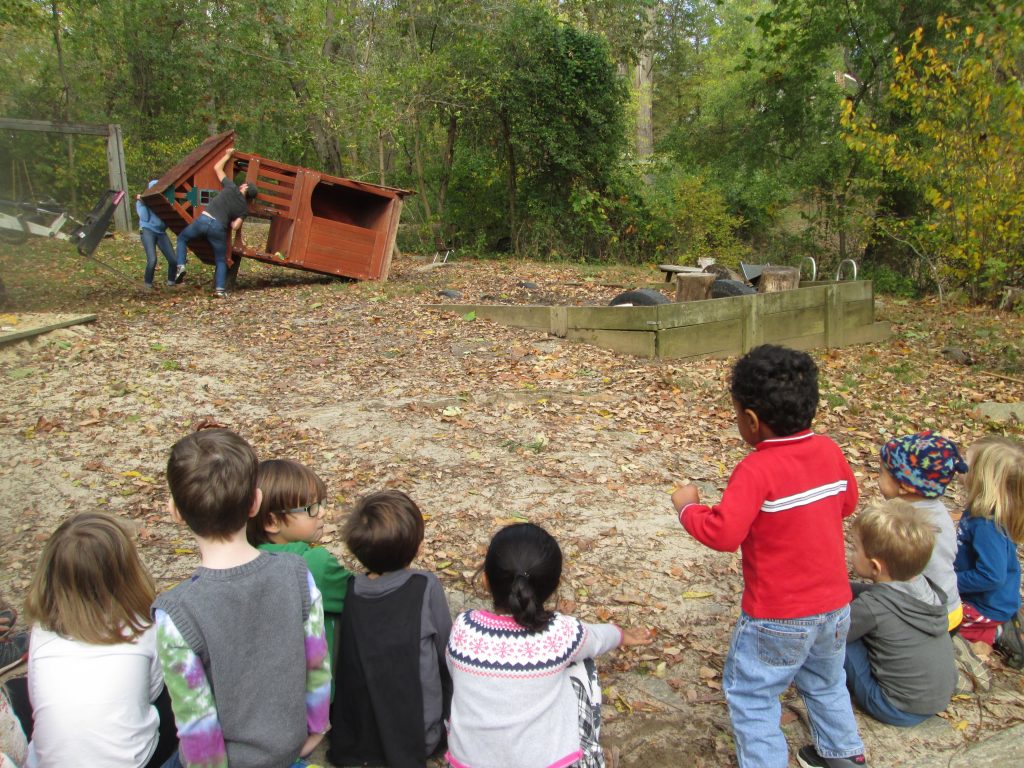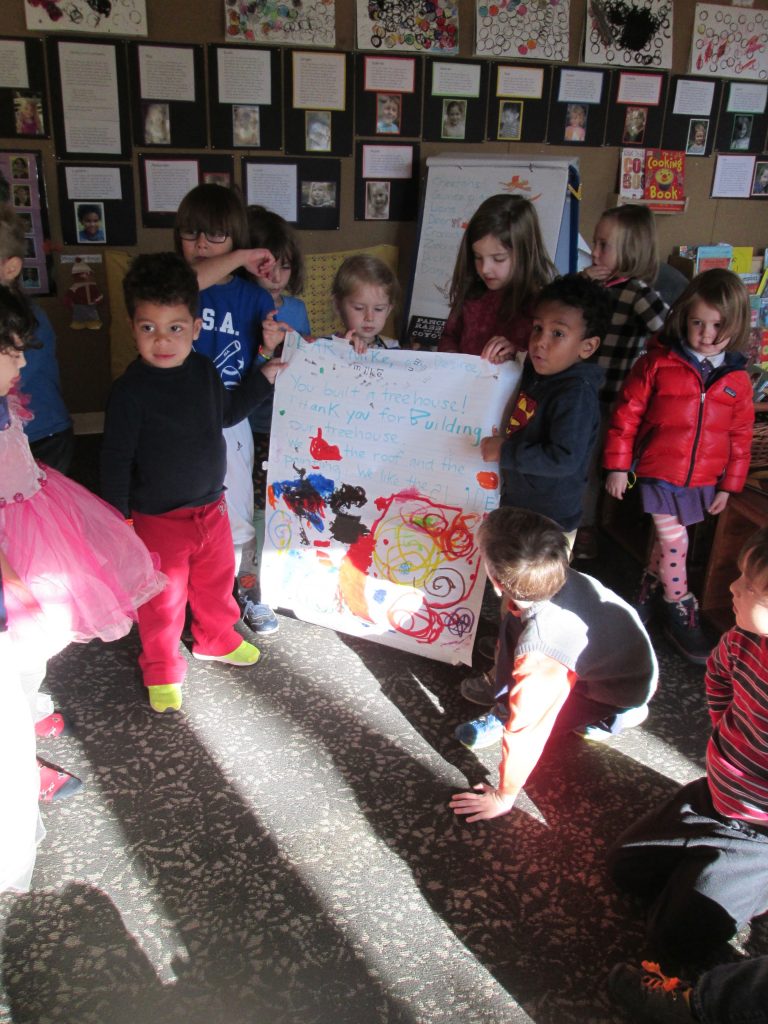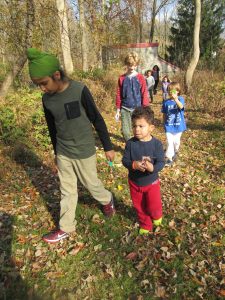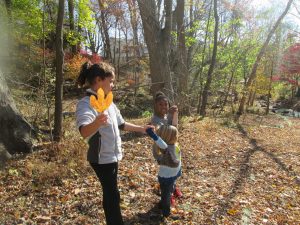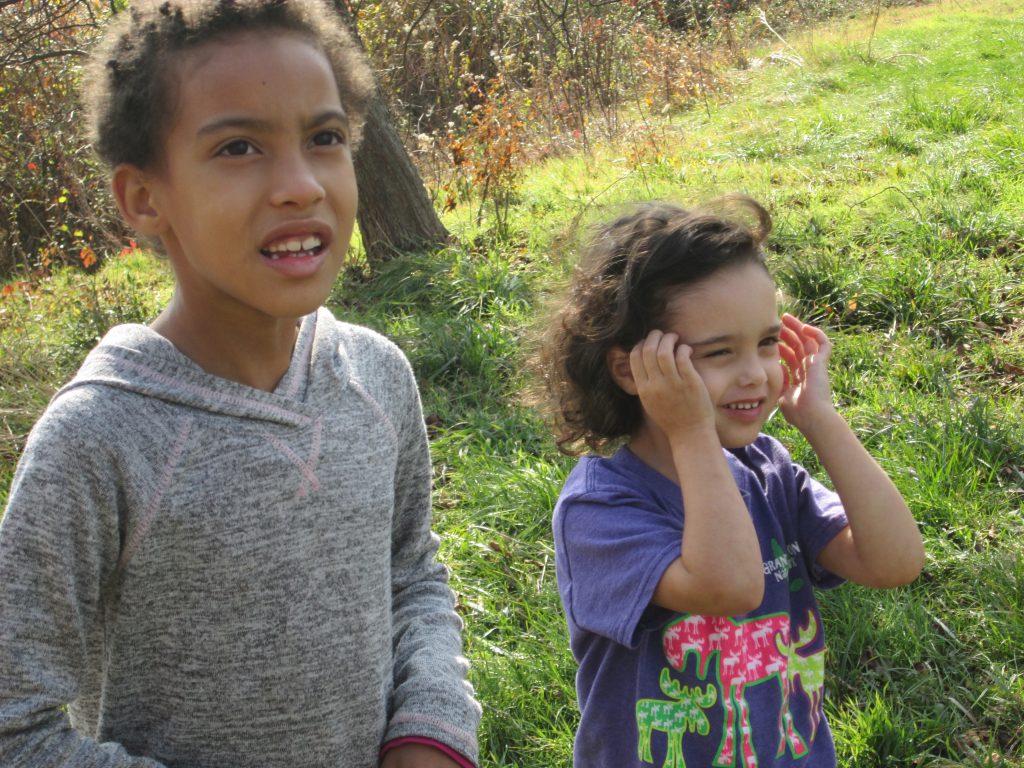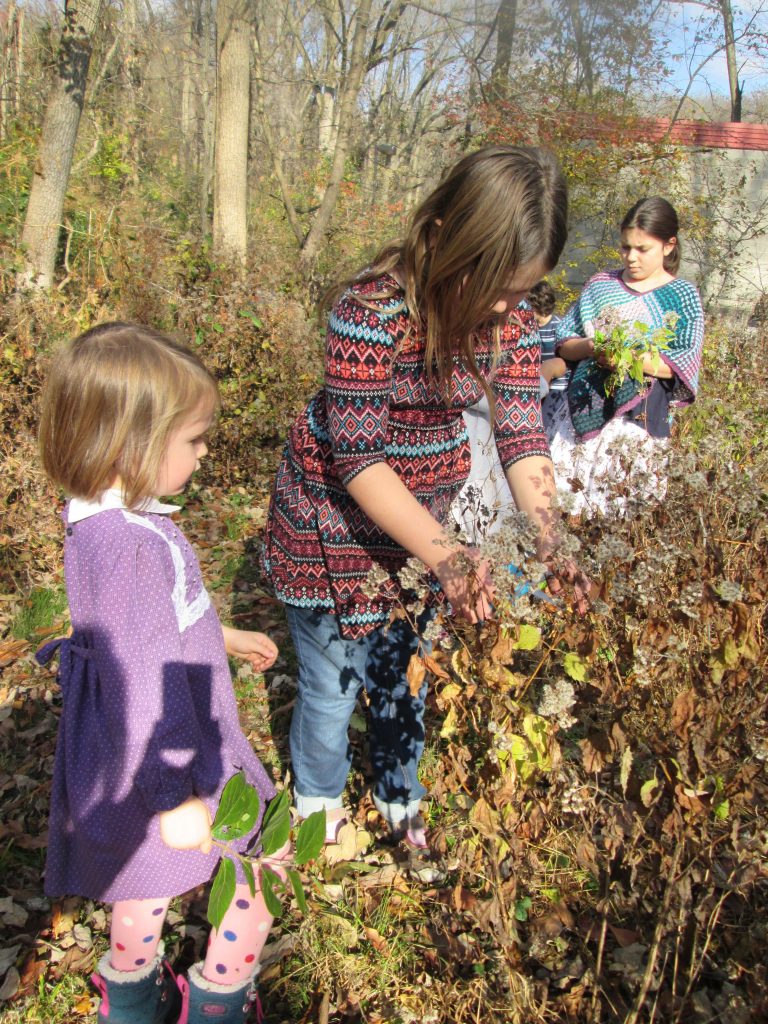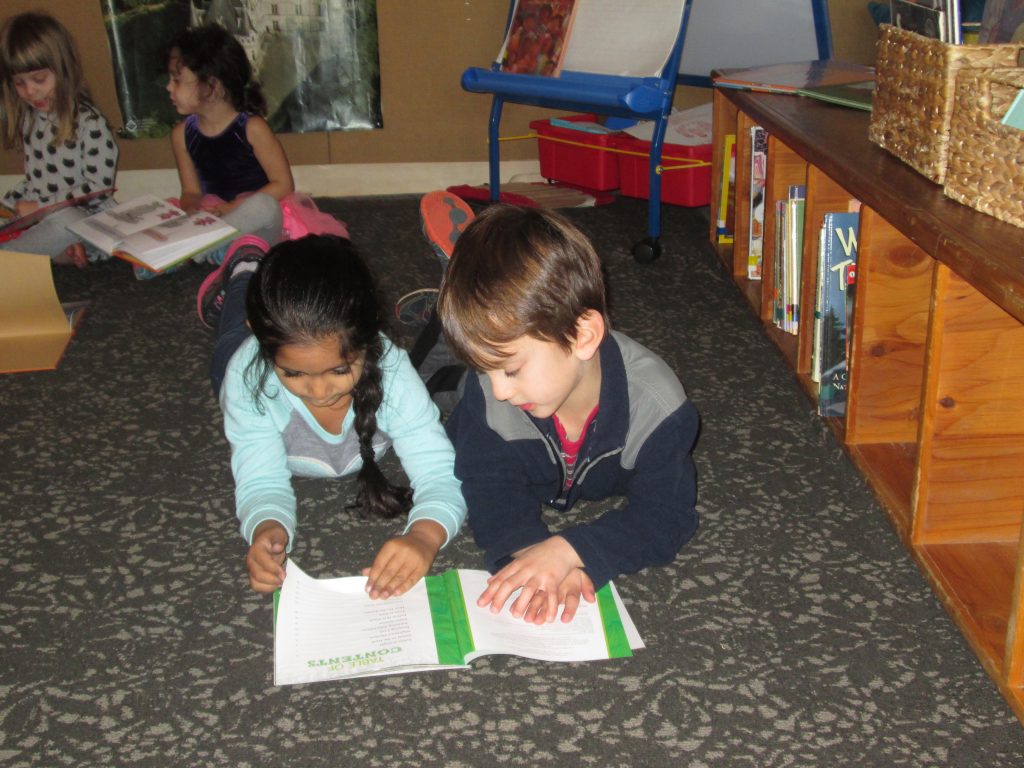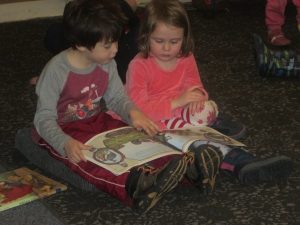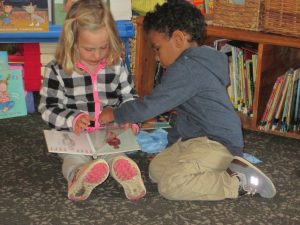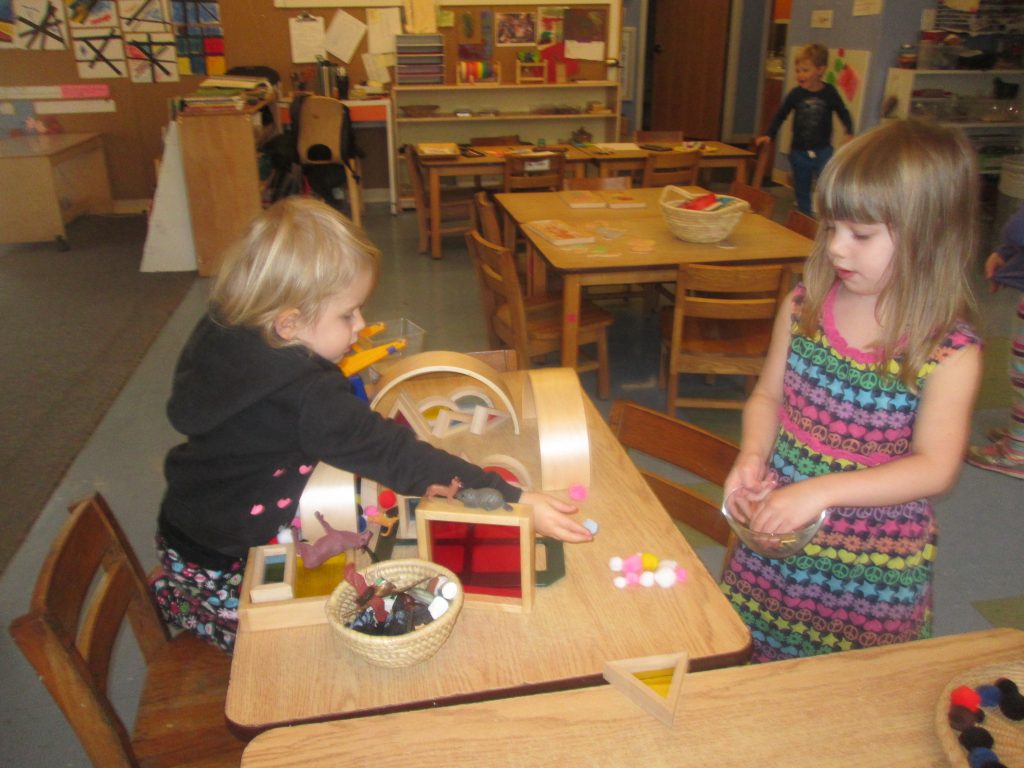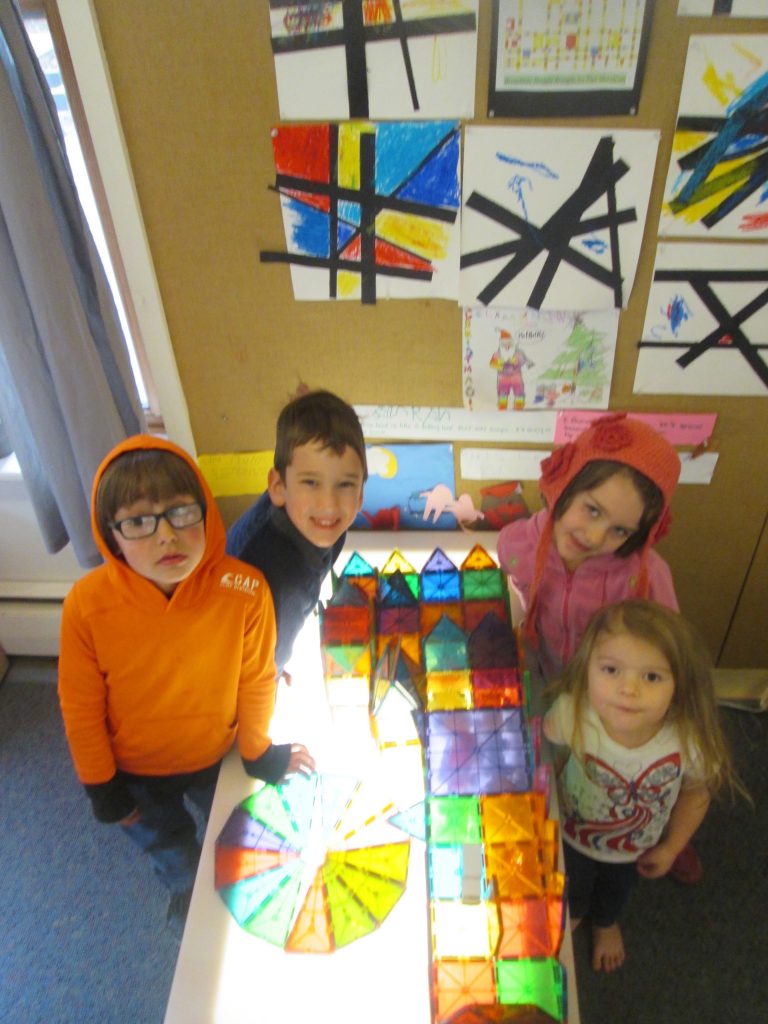Finding Empathy Through Art and Story
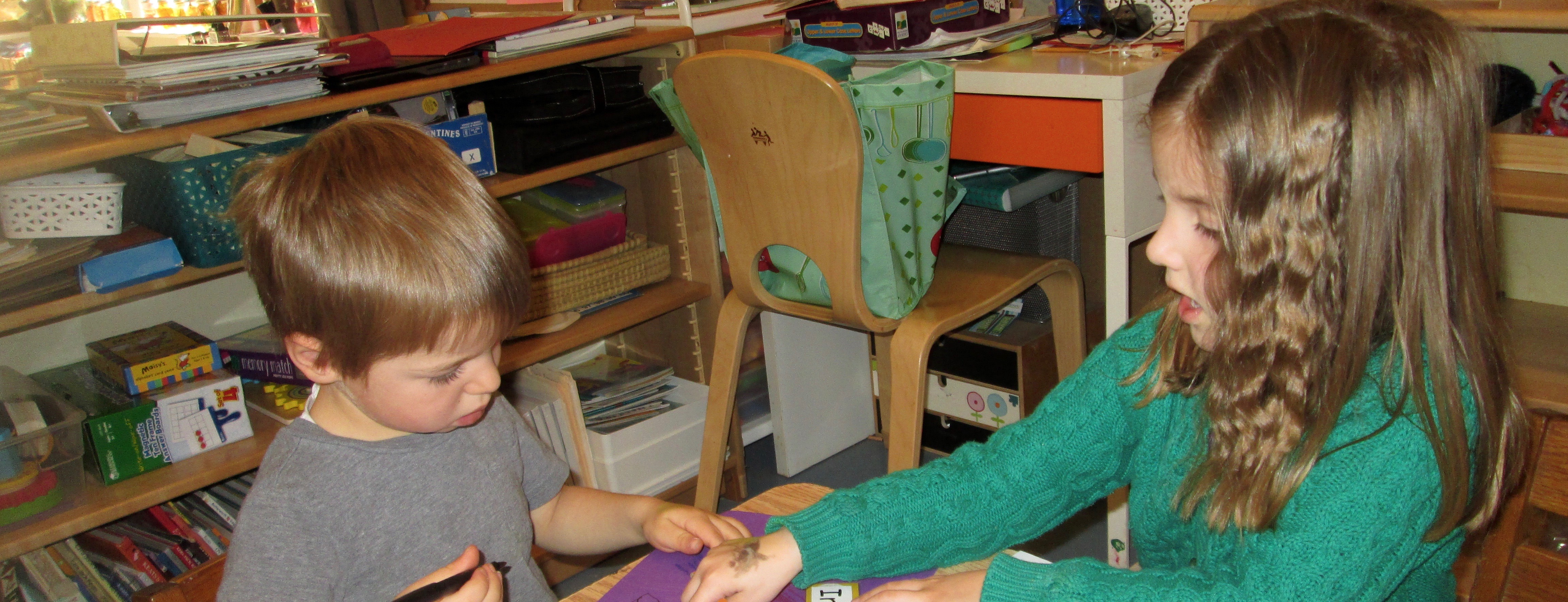
During morning choice time this year, many of our learners working at the art table began to make art for each other. We observed how they took agency in talking about what they were creating, such as cards, collage, or drawings, and their intention to give it to someone as a kind gesture. We shared how exciting it is when people exchange handmade gifts with each other and how artists often exchange their work with other artists. Soon the art table became an innovative social space at choice time, where friends were making things, even paper inventions, with the intention of giving them to someone.
Some children even began asking friends to create something for them, which prompted us to use Inquiry time for making a class experience book filled with these art gifts. Partnerships were made after picking names from a basket, and each pair of learners shared with each other some of their favorite things, including colors, animals, and shapes. Next they started to make a drawing or build a block structure that included the partner’s favorite color, shapes, animal, or design, such as “swirls.” This Inquiry time was filled with dialogue about what they found out about each other. “Gabriel and I both like cats!” “I used purple and pink because that’s what Iris likes.” “Lyndon likes red.” “I like pink and purple. I’d love purple.” Our learners brainstormed on ideas for a book title: “The Big Book of Cards,” “The Happy Book!” “The Big Book of Kindness!” We struck a balance by calling it The Big Happy Book of Kindness. Our group has agreed that the book is “in production” as we continue to add more pages of kindness. Who knows? We may have to publish it in several volumes!
The opportunity to make something that is meaningful for someone and to begin to understand another person’s experiences and emotions promotes empathy in our nursery community. In the article, “Why Empathy Holds the Key to Transforming 21st Century Learning,” Thom Markham writes that “empathy can’t manifest unless we have had our own experiences and emotions to contrast, compare, and connect with others—and we can see that empathy is more than a simple connector; it’s the subterranean, fundamental glue that holds humanity together.”
We recently read Duncan Tonatiuh’s Pancho Rabbit and the Coyote: A Migrant’s Tale, which expanded our understanding of another person’s experiences and emotions beyond the classroom. Pancho Rabbit’s father heads north to work in the lettuce and carrot fields to earn money for his family. When he doesn’t return home for the family’s fiesta, Pancho Rabbit packs his father’s favorite foods, including tortillas and rice and beans, and sets out to find him. He meets a coyote who promises to help him find his father in exchange for the food. Duncan Tonatiuh writes that “On the surface it is a story that reads like a fable, a bit like the Little Red Riding Hood or the Gingerbread Man. But the book is also an allegory of the terrible journey that undocumented immigrants go through in order to reach the U.S.” The story’s themes of family, community, culture, injustice, migration, and immigration emerged as we read and connected with the characters during the exciting narrative. This book became a three-day read-aloud to make space for the children’s dialogue during the story: “He has to find work for money.” “One day we came home and there was no food in the refrigerator.” “Fiesta means party.” “They had to get work for food because there wasn’t any food.” “Pancho Rabbit’s family feels sad when the dad has to go to work.” “Like my mom has a desk in my house.” “They were going to have a party when he came back.” “There’s a pattern on the decorations .” “He might be lost in the woods.” “That was generous of him” [to give food to the coyote].
Each day, we took a “book walk” to invite our learners to retell the story to where we stopped the previous day. “They were sad.” “Papa is going to get the food.” “Maybe they’re sad because they’re thinking Pancho Rabbit is lost in the woods.” “The oldest brother goes out–he’s packing his papa’s favorite food.” “He meets a coyote and the coyote says ‘It will take you days but I will show you a shortcut if you give me rice and beans.’ ”
The children enjoyed acting out scenes from the story, showing how they might feel if they were Pancho Rabbit or the Coyote. Additionally, the cooking in the text paired well with our exploration of grinding corn and cooking with corn and beans. This read-aloud story became a transformative process for our learners and for us because we shared our own experiences and emotions to compare and connect with our understanding of how Pancho Rabbit’s family and the coyote might feel. Empathy grows from the children’s openness, curiosity, appreciation, and awareness that can inspire them to engage with the world.
Connecting to each other with gratitude and unity: During Morning Greeting, we passed a ball of yarn to someone else in the circle and eventually made a gigantic web! After Mike and Desiree constructed a new and exciting little house for our playground, we created a thank-you poster for them. One sunny morning, our older buddies hiked with us and helped us find treasure for making bouquets and sculpture together. We worked (and giggled) with partners to look at new or favorite books together and collaborated in designing elaborate structures.
